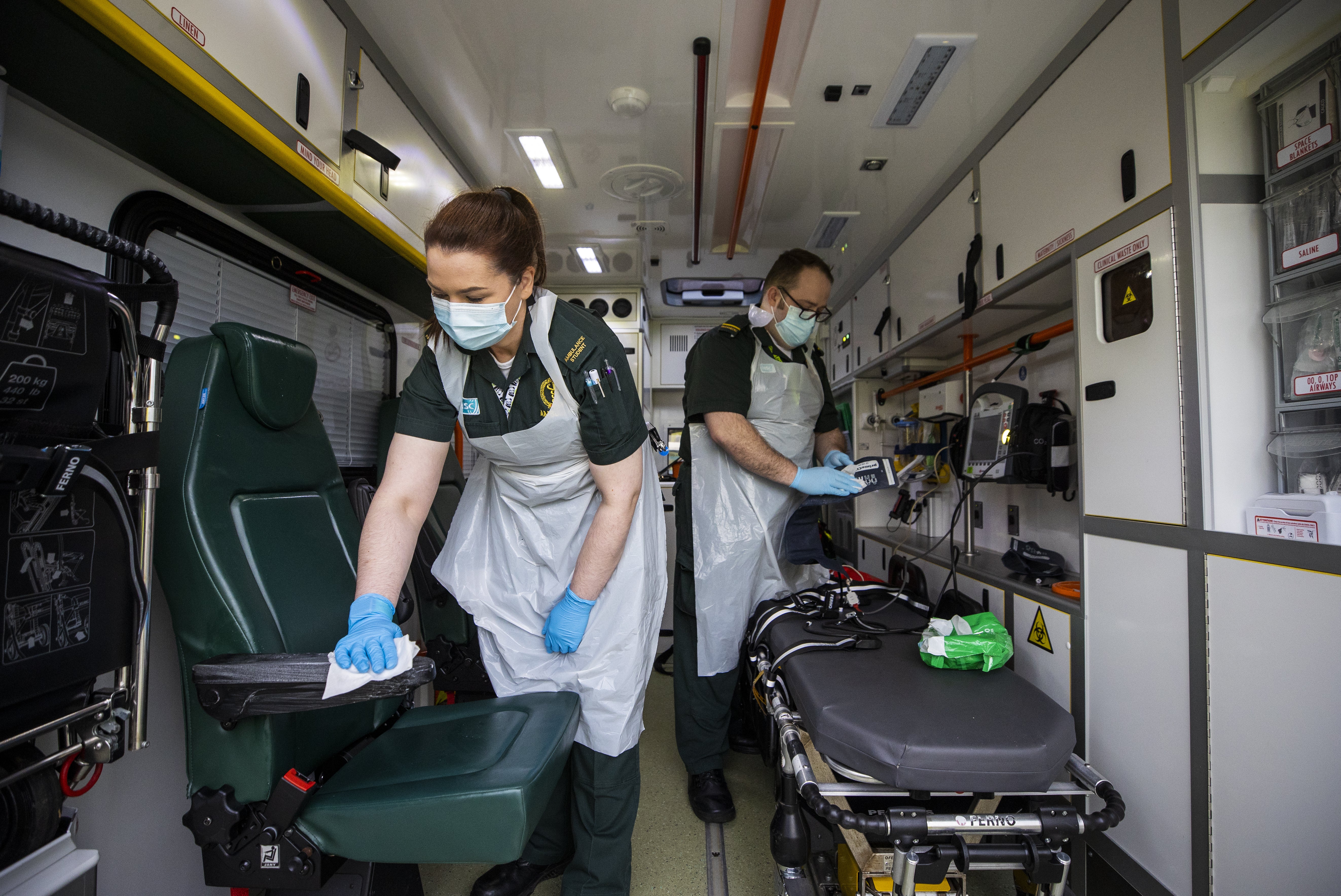Microwave sterilisation technique could speed up ambulance cleaning
Researchers hope method could also be used on tables in restaurants, trains and planes

Your support helps us to tell the story
From reproductive rights to climate change to Big Tech, The Independent is on the ground when the story is developing. Whether it's investigating the financials of Elon Musk's pro-Trump PAC or producing our latest documentary, 'The A Word', which shines a light on the American women fighting for reproductive rights, we know how important it is to parse out the facts from the messaging.
At such a critical moment in US history, we need reporters on the ground. Your donation allows us to keep sending journalists to speak to both sides of the story.
The Independent is trusted by Americans across the entire political spectrum. And unlike many other quality news outlets, we choose not to lock Americans out of our reporting and analysis with paywalls. We believe quality journalism should be available to everyone, paid for by those who can afford it.
Your support makes all the difference.Scientists in Scotland are developing a new microwave sterilisation technique that they say could dramatically speed up the cleaning of ambulances and hospitals.
Electromagnetic waves, antennas, sensor beacons and a liquid layer could be used to rapidly heat up and sterilise surfaces, researchers at Edinburgh, Heriot-Watt University and Strathclyde universities say.
Microwave engineers, infectious disease specialists and polymer scientists are involved in the project.
Currently, it can take around 30 to 40 minutes to disinfect an ambulance with conventional chemicals, taking the vehicles out of action for long periods, increasing pressure on emergency services.
The team, lead by Dr Symon Podilchak, a professional engineer and senior lecturer of radiofrequency technology from the University of Edinburgh, hopes the method will significantly reduce this time span.
It's hoped that the technique could also be used to clean tables in restaurants, trains, planes and other spaces where there is a high turnover of people.
Dr Podilchak said: "I got the idea over a year ago when sterilising baby bottles for my newborn son using a microwave oven. It was when the Covid-19 pandemic was just starting in the UK in early 2020.
"I realised that if bottles could be sterilised in just a few minutes and were safe for a newborn child then it was possible to scale the technique for infected surfaces."
He added: "However, significant research was required to determine the relative distance between the surface and the antenna whilst ensuring safe power levels.
"I also figured out that it would be better to target and focus the microwave beam to the areas most likely to be affected.
"To do this, I reused a technique that I originally developed for charging mobile phones wirelessly."
He then connected with Professor Marc Desmulliez, a chartered engineer and physicist from Heriot-Watt University who previously developed a microwave powered, open-ended oven.
This device was able to deactivate a live coronavirus (strain 229E) at a relatively low temperature of 60C in just 30 seconds.
Prof Desmulliez said: "The beauty of this new technique is that the surfaces sterilised are not being degraded which was one of the key challenges found with using UV light or aerosol techniques.
"The resulting microwave device can also be portable, and this means it can be applied in multiple other applications beyond ambulances and operating theatres.
"It could be used to sterilise dinner tables in restaurants or clean train or airplane tables and seats prior to welcoming new customers."
The team funded the initial research themselves using existing lab equipment and goodwill, and they are now seeking funding to manufacture a device that can be installed in ambulances as a proof-of-concept demonstration.
Their study was published in the IEEE Journal of Electromagnetics, RF and Microwaves in Medicine and Biology on Wednesday.
Additional reporting by Press Association
Join our commenting forum
Join thought-provoking conversations, follow other Independent readers and see their replies
0Comments